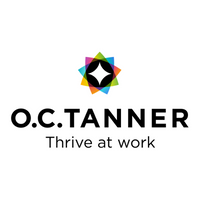Why recognition should be at the heart of organisational change
Organisational change is inevitable, however traditional change management practices are outdated, with the impact on employees often considered too late in the process.
Putting a company’s people front and centre right from the very start is key for success.
As part of this leaders must draw on the expertise of reward and benefits professionals to ensure both the employee voice and recognition are integral to the change management process.
Backseat passengers
All too often, an organisation’s employees become backseat passengers when change is happening, with change managers informing them about the progress of the change rather than involving them in it.
The impact is that those not involved in managing and implementing the change feel like outsiders – the change is happening “to them” rather than with their consent and participation.
Employees must be at the heart of any change - even when it can’t be avoided.
This means giving each employee a voice as this will always improve their perception of the change, whether it’s a company reorganisation, the rollout of a new IT platform or an organisation-wide process modification.
Giving employees a voice could include inviting them to participate in surveys or focus groups about the change, allowing them to give feedback in town halls, or encouraging them to have one-to-one conversations with leaders.
The act of allowing every employee to give their opinions on the proposed change early in the process improves trust in the company and its leaders by eight times.
Plus, a sense of community is five times’ more likely and employees are three times’ more likely to thrive at work.
The importance of feedback
Another important outcome is that when organisations solicit, use, and acknowledge feedback, employees are less likely to feel anxious about any changes and are more likely to stay with the company, thereby reducing disruption.
Employee recognition must also be built into the change management process through recognising and rewarding both teams and individuals who demonstrate behaviours that positively support and/or influence the change.
So, for example, if employees think up new innovative ways of working to support a forthcoming process change, this should be called out and rewarded.
If individuals provide constructive feedback on how a new IT system could be best rolled out, this must be spotlighted and recognised.
Ultimately, recognition and rewards can help employees to better manage and accept change by using positive reinforcement.
Sense of community
Of course, where possible, every recognition moment should be done in public and include a suitable reward.
This elevates the importance of the moment while helping employees to understand their role and contribution in the change process.
Public acts of recognition also strengthen that important sense of community, helping employees to feel that “they’re all in it together” rather than on the outside looking in.
Change management must evolve from being a linear, top-down process to one that centres on an organisation’s people.
As part of this, the employee voice and recognition must be drawn upon to help deliver optimism around the change and temper any feelings of fear and uncertainty.
Supplied by REBA Associate Member, O. C. Tanner
Giving teams the integrated tools they need when, where and how they need them.








